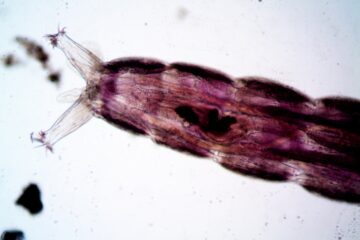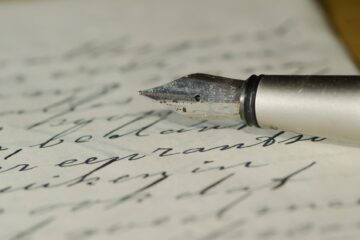![]()
Introduction
Forensic evidence is a very crucial part to a criminal or civil investigation. It is the usage of science in legal proceedings and can help establish a guilt or innocence of an accused. Therefore, the trial judges have a huge responsibility in deciding the admissibility of an evidence which can change or alter the course of the case. On the other hand, forensic scientists have the duty to ensure that the evidence is transparent, accurate and admissible in courts for easier passage of a judgement. Family and criminal cases heavily rely on Forensic evidence. In India, the Malimath Committee report suggested that proper, modern and updated technology for forensic investigation must be provided to ensure efficient investigation.
The United States legal system is continuously having debates upon the standard that is to be followed regarding the admissibility of scientific evidence. The two major standards for admissibility of forensic evidence are namely the Frye and Daubert standards for admissibility. The cases where the standards can be found were a D.C Circuit judgement, Frye v. United States and a United States Supreme Court case, Daubert v Merrell Dow Pharmaceuticals. In United States, while the Federal court system follows the Daubert standard, the states have split opinions between the two. Each state follows a different interpretation of the two judgements.
Frye Standard
The Frye standard had originated from the judgement of Frye v. United States[1]. By early 1970s, the ruling was widely accepted in majority of the state and federal courts.
In 1923, a man named James Alphonzo Frye had made an appeal regarding his conviction for second degree murder. Frye had in the beginning confessed to the crime but later on, he retracted his confession. He was prosecuted by the Government and convicted by a Jury at a Washington D.C. trial court. The court refused to accept “Systolic Blood pressure deception test” or what is developed to be known as a polygraph test which Frye had sought to present as an evidence for his truthfulness.
The sole contention behind Frye’s appeal was the refusal to accept the deception test as evidence. In its judgement, the court stated that an expert opinion can be deemed to be admissible if it is relevant and generally accepted as accurate and reliable by the scientific community. The circuit court had upheld the trial court’s decision to not accept the deception test as scientific evidence. The test was based on the changes in Systolic blood pressure which was considered to “not yet gained such standing and scientific recognition among physiological and psychological authorities.”
Justice Van Ordsel in its opinion described how the machine operates and how when coming into contact with a subject, detects it to be deceptive. The opinion stated that the blood pressure is affected by change of emotions in the witness and the rise in systolic blood pressure are brought about by the nervous impulses. If the blood pressure increased in a predictable manner, falsehood or deception could be detected. The curve detected the struggle with fear and the attempt to control that fear in the mind of a person who tries to deceive the examiner. As there was no proper scientific backing, the deception test was excluded as a scientific evidence and the court, hence, upheld Frye’s conviction.
Although, the judgement was passed in 1923, it was not followed or cited by any subsequent judgement for decades. However, it gained popularity and was increasingly used in criminal cases in the 1970s. it branched towards civil and other tort cases. As the standard was more rampantly used, the criticisms against it increased. Some critics opined that the test was too vague and was not able to manage complex scientific testimonies. In the midst of such criticisms, a new standard namely daubert standard emerged.
Daubert Standard
In the case of Daubert v Merrell Dow Pharmaceuticals Inc.[2], the Supreme court overruled the Frye judgement in federal courts stating that the case is inconsistent with Rule 702 of the federal rules of evidence which deals with expert witnesses. In this case the general acceptance test mentioned in the judgement of Frye is inconsistent with the two standards mentioned under Rule 702 which is Relevance and reliability. The court puts an emphasis on the importance of the “Gatekeeping responsibility” of the trail judge whilst admission of expert testimony. It listed some non-exhaustive factors such as reliability, peer reviews and publications, potential rate of error, existence of standards and controls and general acceptance in the scientific community.
Under this standard, the court become more liberal in its approach in the admission of expert testimony and encouraged subjecting the witnesses to thorough and vigorous cross-examination. In subsequent precedents, the relaxation of admissibility standards was further emphasised upon. In the case of General Electric Co v. Joiner[3], the court emphasised on expert methodology instead of solely focusing on a conclusory opinion. This case also set a proper standard for review in the situation of appellate courts deciding on a district court’s rulings and scientific evidences. The court rejected the notion that it should engage in strict review of scientific evidence by plaintiffs in product liability and tort cases.
The supreme court in the case of Kumho Tire Co v Carmichael[4] decided that the Daubert standard also applies to testing the admissibility of non-scientific evidence. The Supreme Court also held that the Daubert standard applies to witnesses who have non-scientific technical or specialized knowledge of other things as mentioned under Rule 702. According to the court, there is no significant distinction between experts who rely on scientific analyses and others who rely on experience or skill based observation. Under Rule 702 there is no distinction between technical or specialized knowledge and scientific knowledge.
Distinction between Frye and Daubert
In general, the difference between Daubert and Frye standards of admissibility is that the latter is much broader in it approach than the former. While frye focuses on only one question regarding the general acceptability, Daubert emphasises on a list of factors required for an evidence to be admissible. Under the Daubert standard, there is an emphasis on the role of trial judges as gatekeepers for ensuring that the list of factors while accepting scientific evidences is adhered to. While, on the other hand, the Frye standard puts the responsibility on the committee of experts to deem an evidence as generally acceptable to be admitted in courts. Chief justice rehnquist opined that the gatekeeping function imposed on trial judges should not put an obligation or give them an authority to become amateur scientists. However, Daubert does not completely disregard the general acceptability test as it is listed as one of the factors for deciding whether forensic evidence is admissible or not.
There is no mention of the importance of each of the factors over the other but the focus is on whether the court applies the list of criteria appropriate for deeming an evidence suitable or admissible. Testing for reliability often forms a necessary factor for testing evidences. It is important to test an expert’s scientific methods for reliability. Hence, in some cases, reliability as a factor is given more importance than the other factors. In the judgement of Bielskis v Louisville ladder Inc.[5], the circuit court excluded the Plaintiff’s expert witness. The engineering expert who was going to testify regarding a defectively designed scaffold relating to the case, had used Google for searching issues for his testimony. The court criticised the testimony of the expert which was based on non-reliable proof and that he had made no attempt to test the credibility of his hypothesis.
The Daubert standard sparked opinions on whether the judiciary is equipped to decide the credibility of scientific testimony and whether it affects the rate of acceptance of such expert testimonies. The impact of Daubert standard on the rates of admissibility of expert opinions is debatable with several studies reaching different conclusions.There is no studies regarding the strictness of the two standards. Every court or jurisdiction have different opinions regarding the acceptance of one of the two standards. Daubert applies to all federal courts while a number of states use the Frye standard. Though some states have adopted Daubert, it has not been a uniformly applied standard. Only nine states have in its entirety applied Daubert standard of admissibility. Others have completely adopted a different standard.[6]
Conclusion
In India, Under Section 45 of the Indian Evidence Act, 1872, it is stated that the court can form opinions regarding the acceptance of foreign law, handwriting analysis, science, art, scientific evidence etc by experts. The experts are advisors giving opinions about various aspects of a case which requires scientific intervention. The judges have to be cautious and responsible while decided upon whether an expert opinion is credible and whether it can be accepted or not be taken into consideration at all. A piece of forensic opinion or evidence can greatly influence the outcome of a case. Wrongful selection or exclusion of evidences may lead to the wrongful imprisonment of an innocent person. Hence, wise choice of admissible forensic evidence based on the set of appropriate standards is extremely important.
References:
[1] Frye v United States, 293 F. 1013 (D.C. Cir. 1923).
[2] Daubert v Merrell Dow Pharmaceuticals Inc., 509 U.S. 579 (1993).
[3] General Electric Co v. Joiner, 522 U.S. 136 (1997).
[4] Kumho Tire Co v Carmichael, 526 U.S. 137 (1999).
[5] Bielskis v. Louisville Ladders Inc., Case No. 07 c 1411, (N.D. Ill. Jul. 18, 2007).
[6] Anjelica Cappellino, J.D., Daubert vs. Frye: Navigating the Standards of Admissibility for Expert Testimony, Expert Institute, (April 11, 2022), https://www.expertinstitute.com/resources/insights/daubert-vs-frye-navigating-the-standards-of-admissibility-for-expert-testimony/.



0 Comments